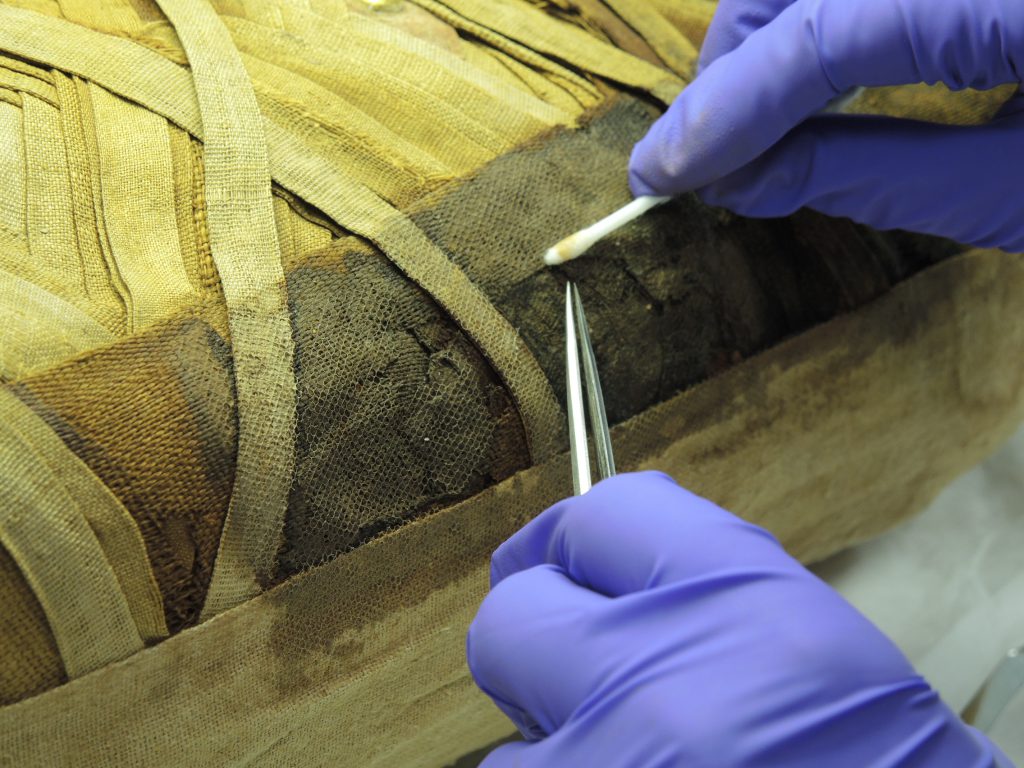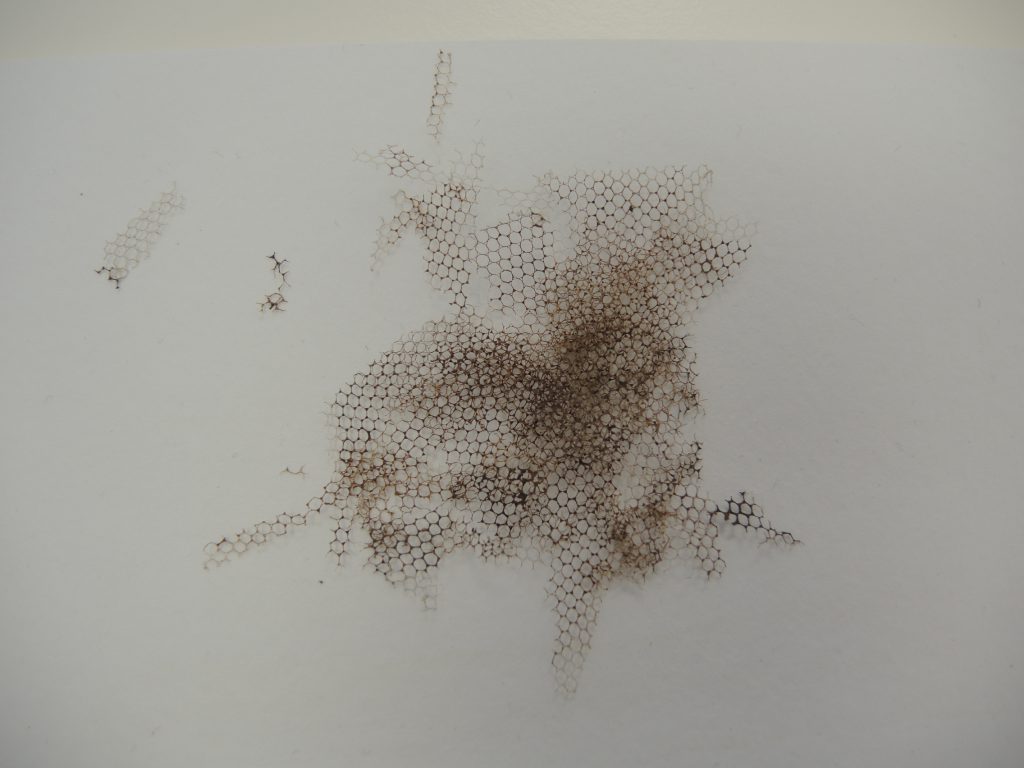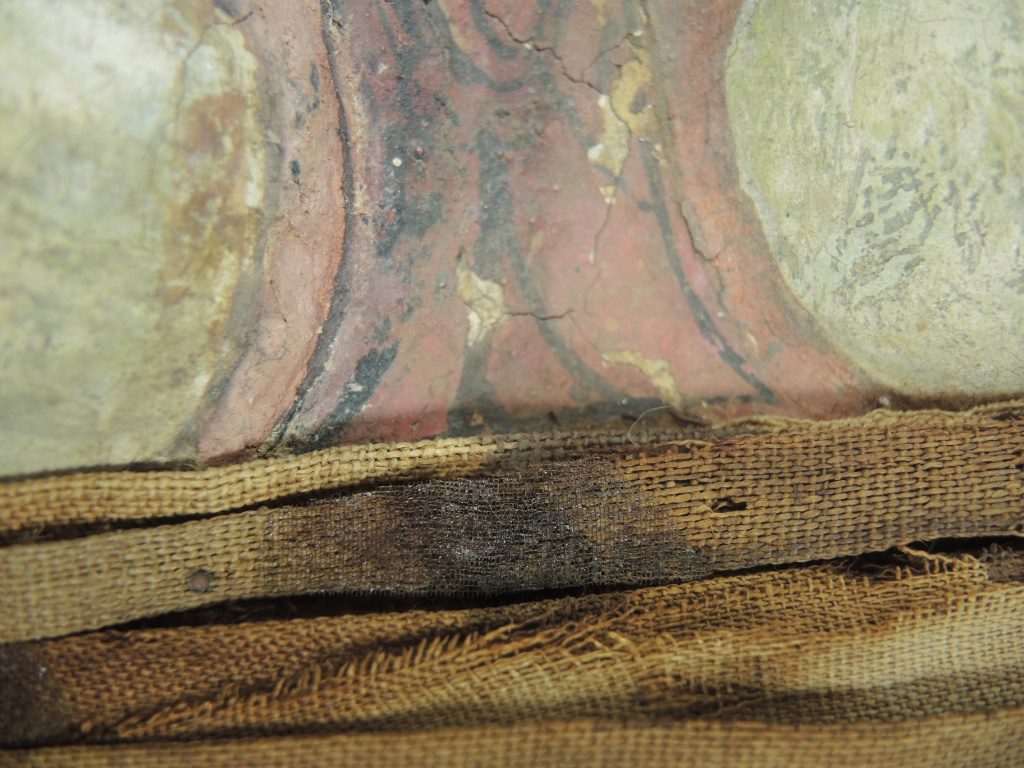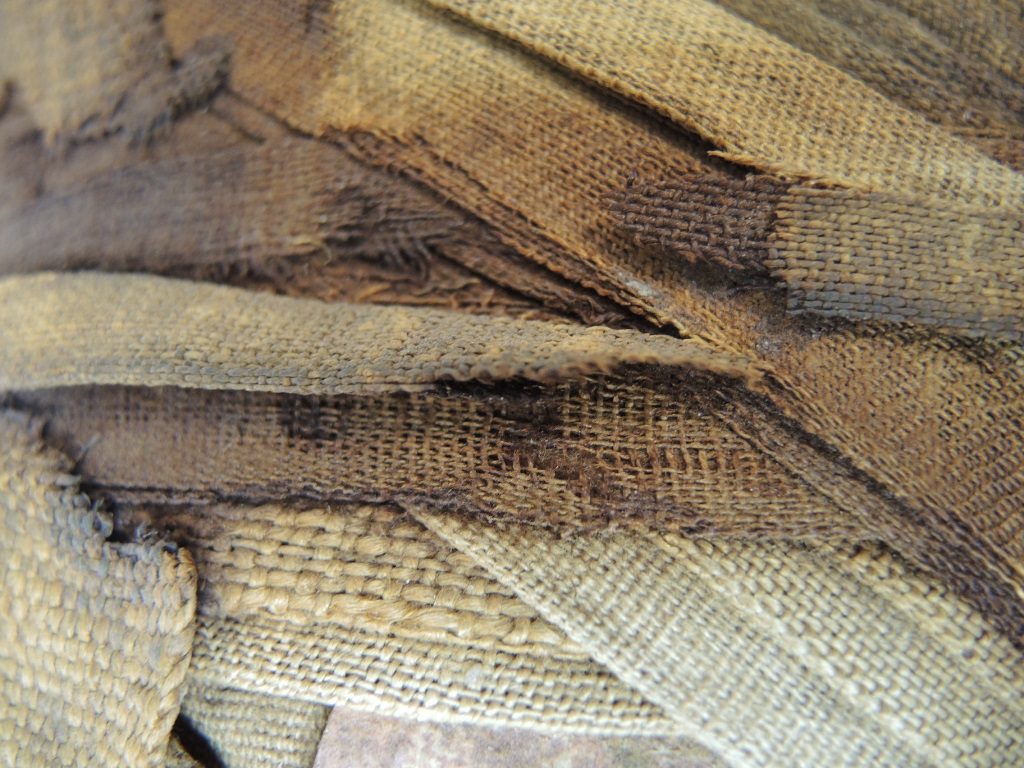In 2018 I was incredibly lucky to contribute to the conservation of a mummified person. A dream of mine to work on and something on my conservation bucket list!

A Roman-era mummified girl was one of many objects to be conserved for the final phase of the National Museum Scotland major redevelopment. This final phase saw our Ancient Egypt and East Asia galleries getting a fabulous new exhibition spaces with many objects from our collection never seen before by the public.

Considering her age, her condition was not too bad. She required a good surface clean using a low suction museum mini vacuum and soft bristle brush. This allowed me to get into all the nooks and crannies between the wrappings.


As you may see from the ‘before’ and ‘after’ detail images above, the surface clean was very successful at lifting loose dust, dirt and fibres. It was also very satisfying to do!
On the proper left side of the mummified girl was a large area that had been conserved by the Museum many years ago. This previous conservation, although suitable at the time, was now failing and did not look particularly nice.

This previous conservation used nylon net coated in a conservation adhesive to help stabilise the area of damage. Coating fabric in adhesive as a support treatment is still used in conservation today, however, this previous conservation had used paint to tint and colour match the object and the nylon net was now brittle and had several small holes and tears in it.

As you can see from the detail image above, the paint’s appearance had deteriorated over time, was thick in places and did not completely match the colours of the textile wrappings.
To remove the nylon net, testing was carried out to determine what would soften and solubilize the adhesive and the paint, without causing any damage to the object. Two solvents, Acetone and IDA (Industrial Denatured Alcohol) were trialled and both were found to work well. Water was not tested, as I did not want to introduce water to the textiles as it had the potential to ingress through the layers and cause water marks and staining. Solvents like Acetone and IDA tend to evaporate before the liquid penetrates too far into the textile’s fibres.
IDA was chosen as the main solvent as it tends to be a less harsh or drying solvent in comparison to Acetone, although a little Acetone was used in areas which were more stubborn to soften and solubilize.




Once a section of nylon net was removed, a little more solvent was worked into the area to remove any paint or adhesive residue that remained on the surface of the textile wrappings.

The area underneath the old conservation was extremely stiff, even after all that paint and adhesive removal. It is thought that the paint and adhesive were applied so heavily that they completely penetrated the textile fibres and layers, making them brick hard! Due to this, it was felt that reinstating a nylon net support was not necessary as the paint and adhesive residue was holding the damage in place and preventing fraying and loss.
Other areas that required attention were the broken and/or fraying textile bandages and areas with holes that were evident throughout her wrapping.




To support the holes and damaged areas of the textile wrappings, it was decided that an adhesive support treatment would be more sympathetic to the textiles as stitching through the wrappings would cause more damage and not be as secure.


On this occasion silk crepeline fabric, colour matched to the different areas of the textile, was chosen for the support. This fabric was coated in conservation grade adhesive to create a film that could then be cut to the desired shape and size depending on the area being treated. To apply the coated fabric, a heated spatula was used to bond it to the textile. This method worked well as the adhesive fabric film created a strong bond that could easily be reversed in the future.

Although I enjoyed conserving a mummified person, it was a surreal experience. When I got engrossed in a task and focused on small areas for hours at a time, I would tend to forget that there was a human body under all those textile wrappings. I made sure that if anyone entered the workroom, I would cover her up, and I would always say hello and goodbye at the beginning and end of each day out of respect.
The mummified girl is on display in the Ancient Egypt Rediscovered gallery at the National Museum of Scotland as part of an exhibit about burial practices in Egypt during the Greco-Roman period. Her mask combines new Roman-style – a lifelike portrait – with ancient Egyptian tradition – a gilded face to represent divine transformation. I hope you can come meet her too.
